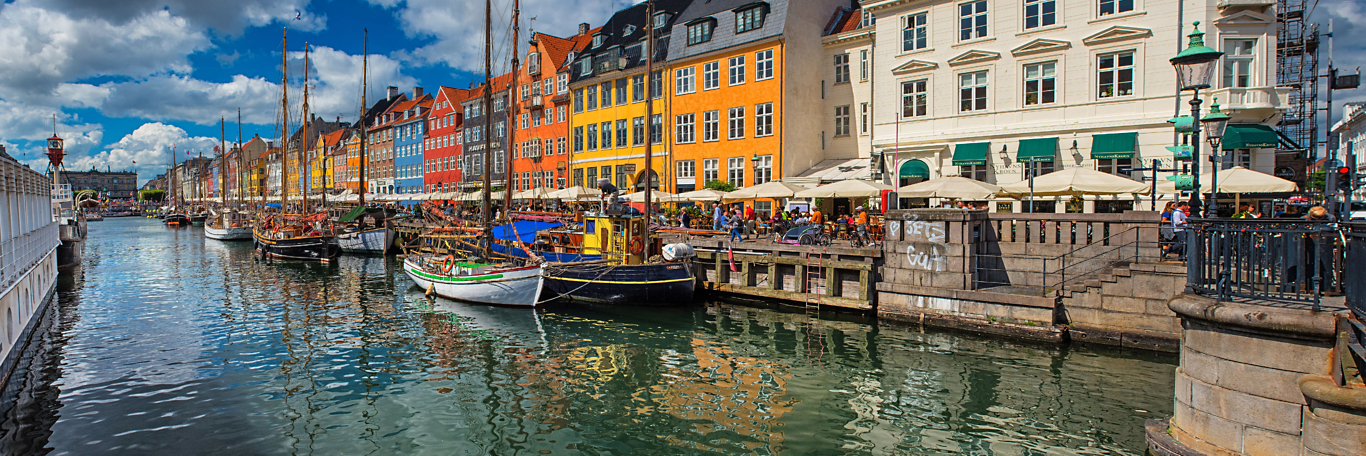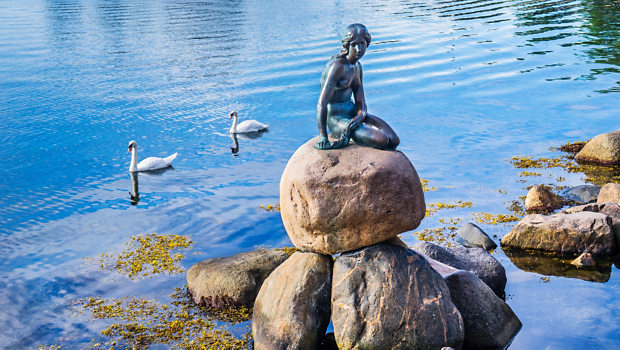You’re receiving this message because your web browser
is no longer supported
We recommend upgrading your browser—simply click the button below and follow the instructions that will appear. Updating will allow you to accept Terms and Conditions, make online payments, read our itineraries, and view Dates and Prices.
To get the best experience on our website, please consider using:
- Chrome
- Microsoft Edge
- Firefox
- Safari (for Mac or iPad Devices)

denmark
Compare Our Trips

Spend 3 days in Denmark on
Grand Baltic Sea Voyage
O.A.T. Adventure by Small Ship
Spend 4 days in Denmark on our
Post-trip Extension
Copenhagen, Denmark
Copenhagen, Denmark

Compare Trips
Add Trip
including international airfare
per day
*This information is not available for our trip extensions. You must reserve the main trip to participate on this extension.
**This information is not currently available for this trip. Please check back soon.
You may compare up to Adventures at a time.
Would you like to compare your current selected trips?
Yes, View Adventure ComparisonDenmark: Month-By-Month
There are pros and cons to visiting a destination during any time of the year. Find out what you can expect during your ideal travel time, from weather and climate, to holidays, festivals, and more.
Denmark in January-March
There's a reason Danes invented the concept of hygge, meaning (roughly) “cozy contentment”: They rely on the warm feelings it engenders to get them through the long, dark winter. The season is characterized by average temperatures of around 32 degrees, whipping winds, snow, and rain. Natural light is a rare sight this time of year—in some locations, the hazy sun only peeks out for seven hours a day. Shops and other tourist destinations often close during this time of year due to low demand. Even locals prefer to stay indoors, ensconced in warm sweaters, surrounded by flickering candles, and cultivating hygge.
Holidays & Events
- February: Fastelavn (Carnival); Danes across the country mark the start of the Lenten season with family-friendly celebrations.
- February: Vinterjazz; locals emerge from hibernation for a weeklong, countrywide jazz festival featuring performers from around the world.
Must See
Unlike many Roman Catholic countries, whose Carnival celebrations are marked by opulent floats and raucous parties, Lutheran Denmark opts for a more more child-friendly approach known as Fastelavn. When morning arrives on the day of the event, children participate in fastelavnsris—ritually flogging their parents to wake them up. The entire family will then head into town for the festivities, including the perennially popular slå katten af tønden (literally, "hit the cat out of the barrel"), during which children beat a wooden barrel decorated with a cat to access the candy inside. Cream-filled sweet buns known as fastelavnsbolle are also traditionally enjoyed on the day.
Watch this film to discover more about Denmark
Denmark in April-June
The days begin to grow longer as spring arrives, and rising temperatures begin coaxing both plants and people from their winter hideaways. In April, cherry blossom trees canopy the country in vast swaths of pink blooms. By May, Denmark is in full bloom—and with characteristically clear skies and average highs around 61 degrees, it’s comfortable enough to spend a day outdoors. It’s an ideal time to visit, before the high travel season begins in warm and sunny June.
Holidays & Events
- May: Ascension Day; this public holiday, celebrated 40 days after Easter, marks Christ’s ascension into heaven.
- May/June: Whit Monday; on the seventh Monday after Easter, this public holiday honors the Christian holiday of Pentecost, when the Holy Spirit is believed to have descended upon Christ’s disciples.
- June 5: Constitution Day; marks the day the Danish constitution was signed in 1849. Some locals celebrate by attending political speeches and rallies.
- Late June: Midsummer Festival; this summer solstice celebration is marked by bonfires, picnics, and beach visits.
Must See
Though not as renowned for springtime blooms as Japan, Copenhagen's cherry blossom season is not to be missed. The flowers tend to emerge in late April, and the most popular spot to see them is Bispebjerg Cemetery. While seemingly an odd choice for such a romantic botanical display, Danish cemeteries are well-tended and are considered important horticultural sites.
Watch this film to discover more about Denmark
Denmark in July-September
Summer is in full swing, and with up to 17 hours of sunshine each day, there's plenty time for outdoor exploration and open-air celebrations. Many festivals occur during the summer months, and while tourism is at its peak, the locals swarm to the islands rather than city attractions. September brings mild, lower temperatures, along with lighter crowds, making it an ideal time to hike or dip your toes in the shimmering sea.
Holidays & Events
- Late July: Roskilde Festival; featuring a progressive music program and including events, food and activities, it is one of the largest cultural festivals in Europe.
- Early August: Skanderborg Festival; nestled in the woodlands, it covers many styles of music and is held during the first weekend of August.
- Late August: Hans Christian Andersen Festival; celebrating Copenhagen’s native son with concerts, parades, dancing and performances, this week-long festival offers wonder and revelry for all ages.
Must See
Created by two high-school-aged hippies in 1971 as an answer to Woodstock, the Roskilde Festival has grown into one of the largest mainstream musical extravaganzas in Europe, featuring famous artists and up-and-comers in a variety of genres—from rock to hip hop to electronica. Up to 125,000 spectators flock to the city of Roskilde for the concert each year, with most opting to camp in the 200-acre festival site for the one-week duration of the event.
For the most committed music lovers, another concert-series awaits just a few days later: Skanderborg. Located in a verdant beech forest, the week-long event has been dubbed "Denmark's Most Beautiful Festival." Though its only about a third of the size of Roskilde, Skanderborg still attracts big-name talent. It even has its own mascot—a guitar-wielding, mustachioed troll named FestiWalther.
Watch this film to discover more about Denmark
Denmark in October-December
The landscape is painted a ravishing mix of gold, red and orange in early autumn, and with October’s pleasant temperatures and the lighter crowds, this is an ideal time to visit Denmark. November ushers in the start of Scandinavian winter, and with that comes shorter days and colder temperatures, but come December, it also turns the region into a winter wonderland, filling city squares with seasonal celebrations and welcoming markets.
Holidays & Events
- October: Culture Night
- December 25: Christmas Day
Must See
Copenhagen comes alive during Culture Night in October. With hundreds of activities and free public transportation in the city, you can access museums, art galleries, exhibition spaces, churches, performances, and more. This one-night-only event features activities of all kinds for all ages, with the entire city working together for its success.
Enchanted with the spirit of the season, the Christmas Markets of Denmark fill the country with joy and wonder. Savor seasonal delicacies like freshly baked cookies, behold the stalls brimming with authentic handmade crafts, and revel in the festive decorations and music. Stroll through the markets and immerse yourself in the storybook atmosphere.
Watch this film to discover more about Denmark
Average Monthly Temperatures
High Temp Low Temp
Denmark Interactive Map
Click on map markers below to view information about top Denmark experiences
Click here to zoom in and out of this map
*Destinations shown on this map are approximations of exact locations
Copenhagen

From its pastel merchant buildings in the 17th century to its 21st-century steel-and-glass towers, Copenhagen has always exuded flair and style. Some of its most memorable treasures, like the bronze Little Mermaid statue, are humble in scope; others, like the massive Christiansborg Palace where the Parliament meets, speak of majesty and empire. But its luster is not limited to the historic: Copenhagen today is a hub of cutting-edge design and the most sought-after Michelin-starred restaurants. This diversity comes together when you follow the footsteps of Hans Christian Andersen to one of the cafés of Nyhan, the quayside neighborhood surrounding the canal of the same name. Settle in with smørrebrød (which we know as smorgasbord) and a craft cocktail, watching chic Danes in the latest fashions stroll along ancient cobbled lanes, and you can experience all of Copenhagen’s personalities at once.
Experience Copenhagen with us on:
Christiania

Copenhagen's controversial commune, Freetown Christiania, is something truly unique to behold. Often referred to as a "community within a community" Christiania was established in 1971 when free-spirited Copenhagen residents began moving into an abandoned military barracks. Eventually, the neighborhood became a haven for hippies and squatters, as well as a symbol of anarchism.
Today, Christiania is home to approximately 1,000 people, and it retains the same alternative spirit it was founded on nearly 50 years ago. Organic eateries, lively concern venues, and collectivist shops are abundant. Until recently, the cannabis trade was also a fixture of the community—but residents and Danish authorities alike have been making efforts to expel illicit substances in an effort to deter crime.
Experience Christiania with us on:
Rønne

Far from the bustle of Copenhagen, the port city of Rønne on the Baltic Sea island of Bornholm is a beloved getaway for Danes. As a major ferry stopover between Denmark and Sweden, the 13th century city exploded with activity in the 19th century, and still reflects its heyday with its half-timbered houses, colorful buildings, and cobblestone streets. Store Torv, the main square, is studded with café tables in the warmer months, and outlined with local shops. Among Rønne’s greatest sources of pride are its history of fine ceramics, enshrined at the Hjorths Fabrik museum, and its clock-making tradition. Just getting to Rønne is part of the fun, as the island itself is a beauty, with pale cliffs, lush forests, and white sand beaches, all presided over by a 19th century lighthouse rising 60 feet over the harbor.
Experience Rønne with us on:
Traveler Photos & Videos
View photos and videos submitted by fellow travelers from our Denmark trips. Share your own travel photos »
